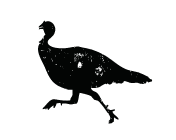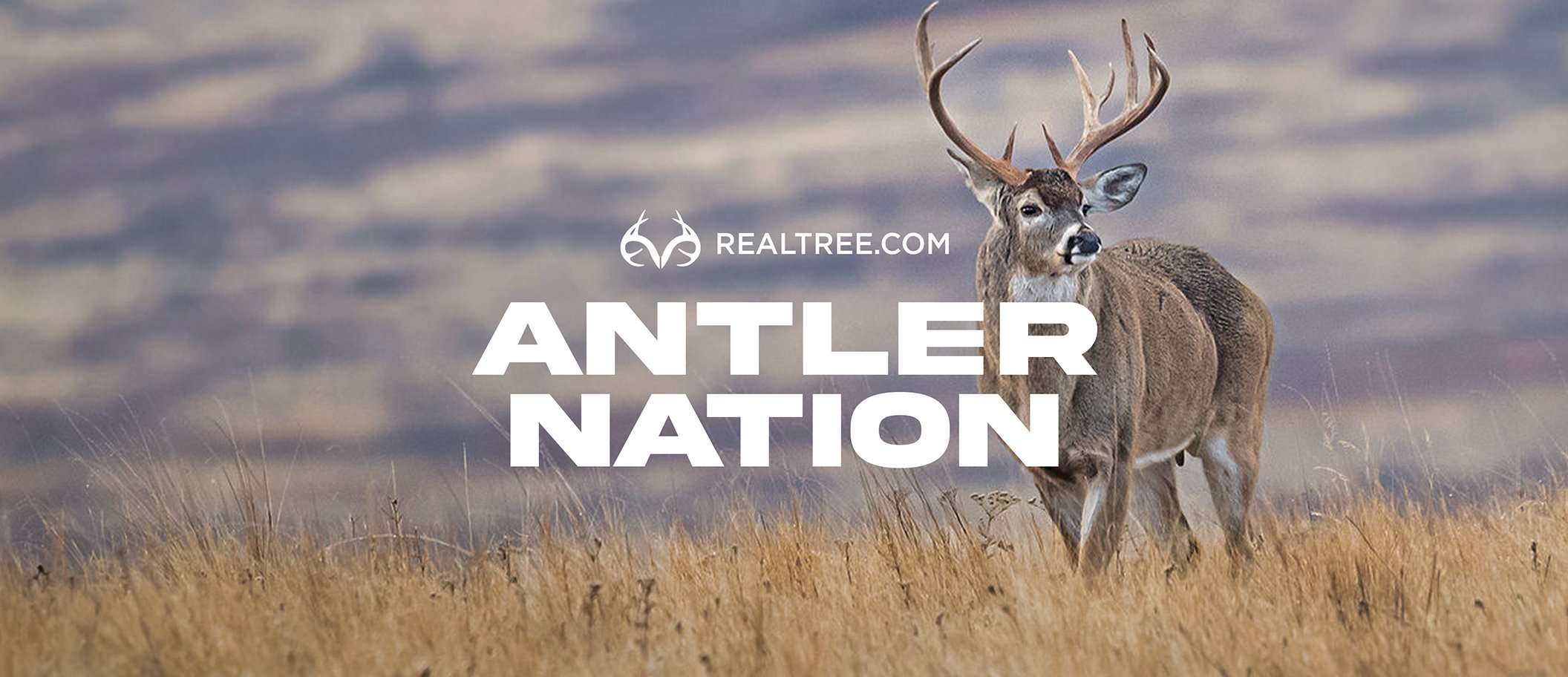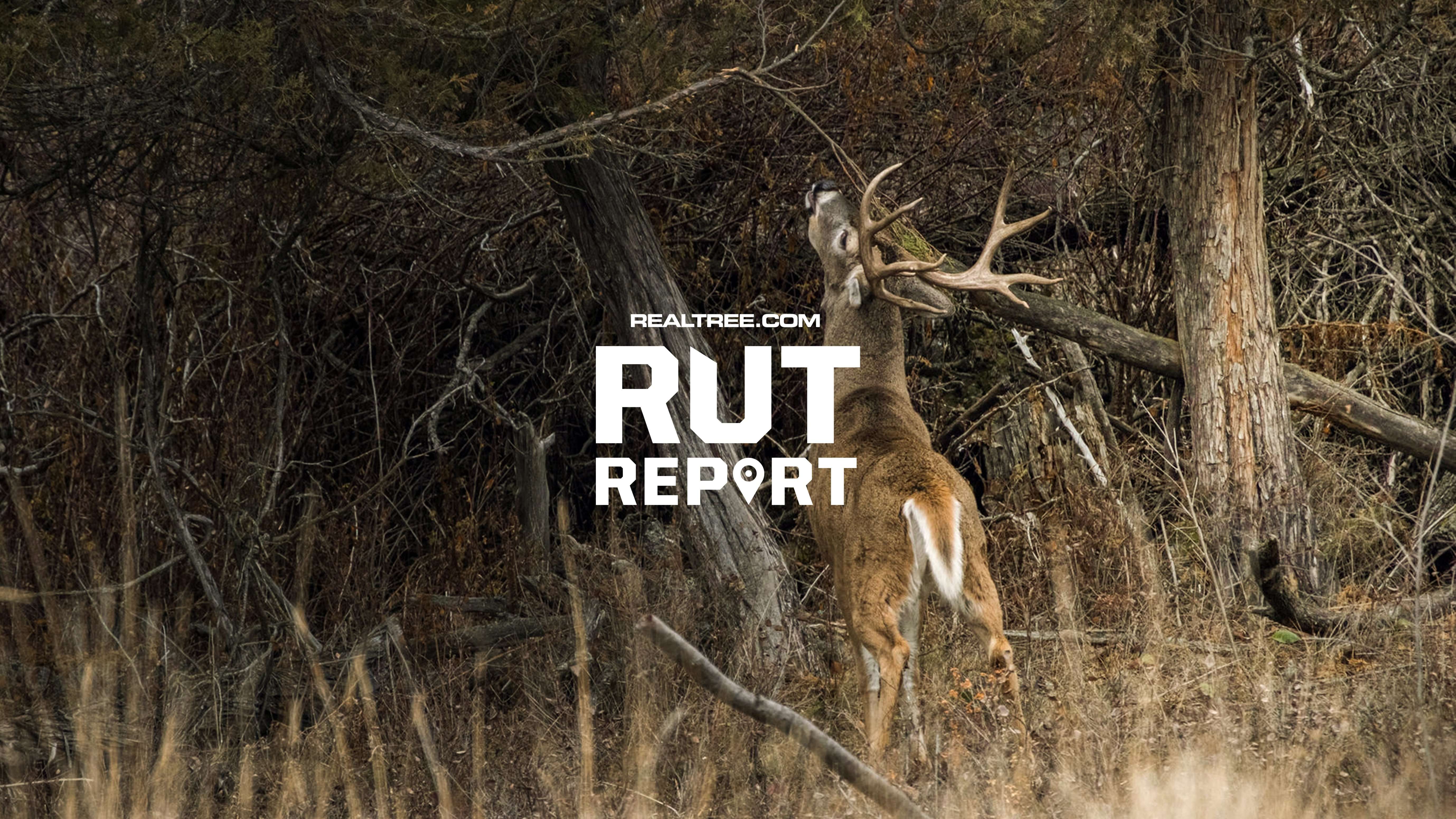If you’re an avid waterfowler, you need to do this draw hunt once in your life. Here’s how to navigate the process
It was 9 a.m., almost two hours after legal shooting time, and I had yet to pull the trigger. Britney, my Labrador retriever, stared at me with forlorn, wondering eyes.
“I know girl, where are they?” I asked, almost expecting her to answer.
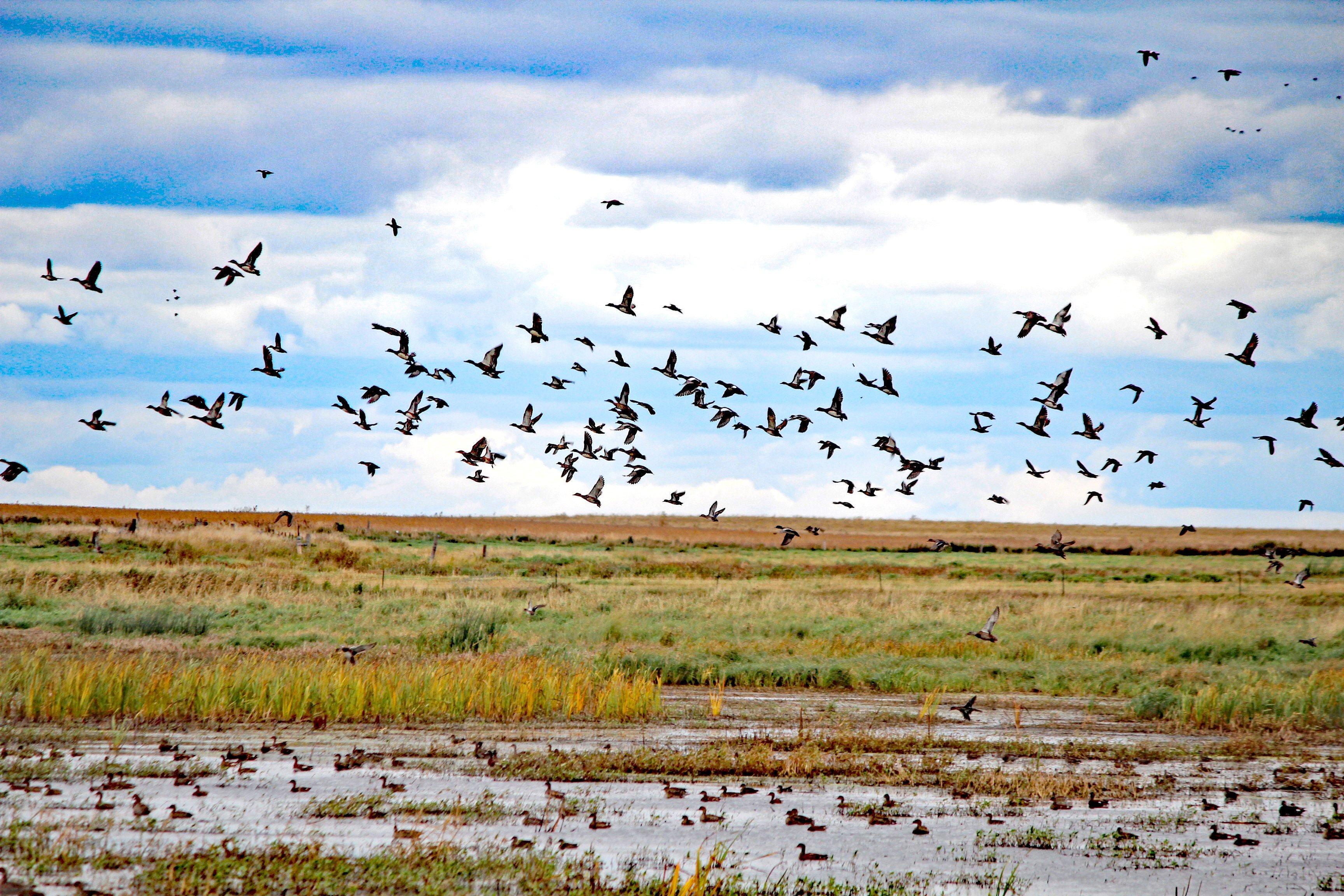
The prairie pothole region in South Dakota is a vast area of wetlands and grasslands that’s home to millions of shallow depressions called potholes. It’s one of the most important habitats for migratory birds in the Western Hemisphere. Image by Richard Simms.
Since my first duck hunting trip to South Dakota in 2010, getting skunked has been almost unheard of. It just doesn’t happen. But on that calm, bright morning, I feared a skunk might be in the works.
Until a few seconds later, when a blue-winged teal dive-bombed the decoys. After what seemed like a lucky shot, and then a short retrieve, Britney and I were on the board. About that time, a stiff breeze picked up, growing in intensity by the minute. In South Dakota, wind equals ducks on the move. By noon, Britney and I had our eight-duck limit. I say eight ducks because during the first 16 days of the South Dakota duck season, hunters are allowed two bonus blue-winged teal in addition to the regular six-duck limit.
And that’s just one of many reasons to visit this great waterfowling destination. In fact, if you’re an avid duck hunter, you need to go at there at least once in your lifetime. But you’ll have to do some prep work first.
HOW IT BEGAN
My annual fall migrations to South Dakota began in 2010. It had been a bad year for me personally and professionally. I felt a desperate desire to escape somewhere — anywhere — by myself.
A friend who had been to South Dakota pheasant hunting the previous year told me of the incredible public-land duck hunting opportunities there. He said, “Pheasant hunting was fun, but I’ll never go back unless I have a duck hunting license. There were ducks everywhere.”
I decided the Mount Rushmore State was escape-worthy, got my license (details forthcoming) and pointed my truck west for the 20-hour drive from southeastern Tennessee.
I still remember the first time I eased across a hill on South Dakota public hunting land and saw one of the thousands of glacial pothole lakes, perhaps 400 yards long and 100 yards wide. From end to end and all the way across, ducks were so thick it seemed I could have walked across the water on them. Binoculars revealed almost every species. For the next several days, sunrise found me there, and I had a limit in hand two hours later or less.
That left me time to get back to the hotel for breakfast, take a nap and then head out in the afternoon to scout for ducks or chase roosters in the pheasant capital of the world. I believed I had found the land of milk and honey. It was the perfect place to decompress, and I knew that trip to South Dakota would not be my last.
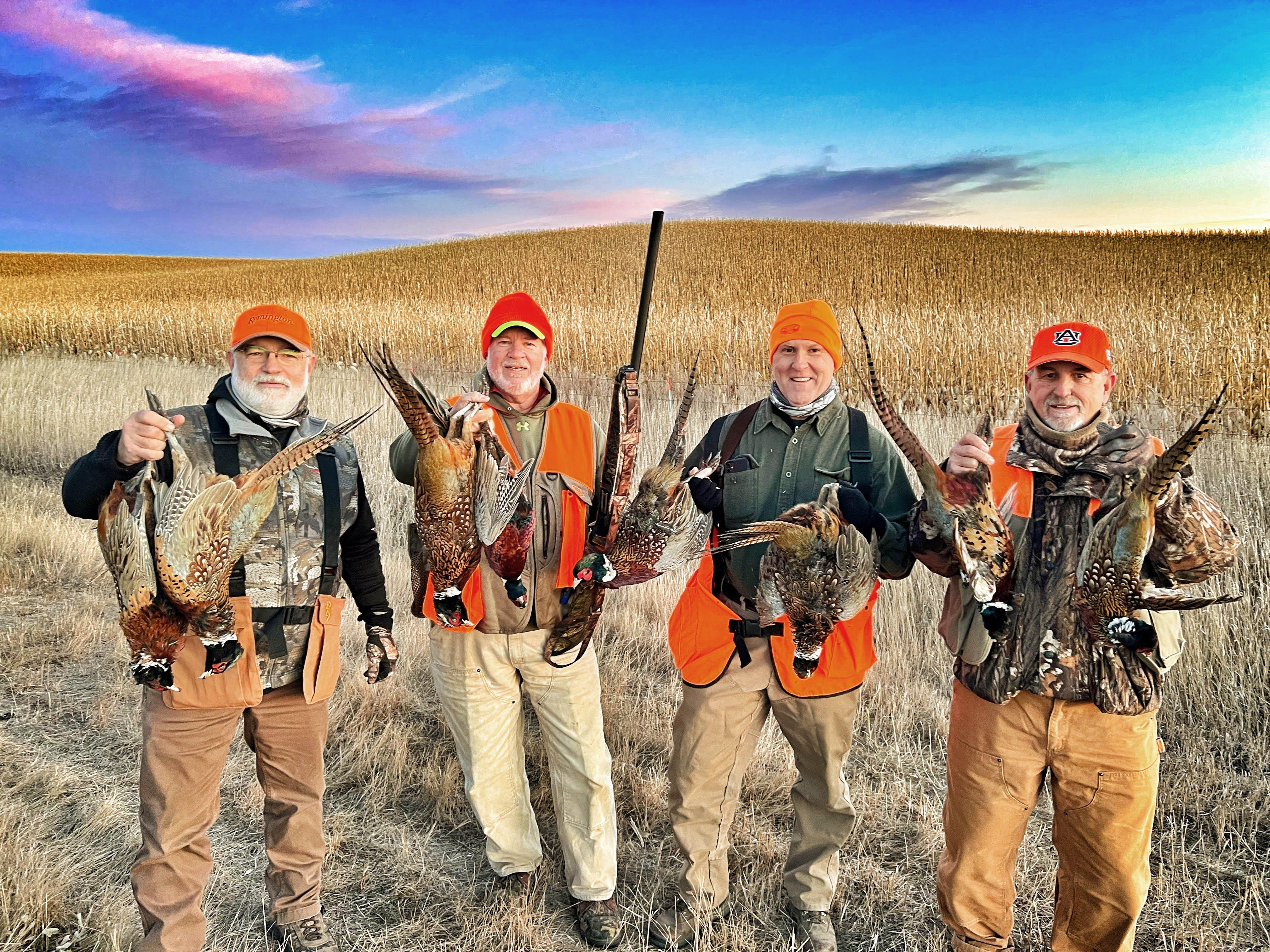
If season dates align, South Dakota also offers prime pheasant hunting in the afternoon. Image by Richard Simms.
Since then, I have traveled to South Dakota 12 times in search of waterfowl. Sometimes, I went with friends, but often I prefer going solo. I’ve never used an outfitter, preferring free-lance hunting on my own.
The potholes of South Dakota, left behind by receding glaciers eons ago, are where many of the country’s ducks hatch before they begin their southerly migration — a migration that seems to be shorter each year because of climate change. So, if the mountain won’t go to Mohammed, Mohammed must figuratively go to the mountain.
DRAW DILEMMA
There is a catch for nonresidents who want to hunt ducks in South Dakota. It’s the only state in America that requires nonresidents to apply for a duck hunting license months in advance, providing relatively few licenses to hunters from outside the state.
Why? During World War II, when soldiers were fighting and dying overseas, lots of rich folks at home discovered the bounty of waterfowl hunting in South Dakota. Out-of-state hunters began buying and leasing property in huge quantities. When soldiers came home from the war, they found their favorite hunting areas were posted. Outraged, they complained to legislators who then passed laws severely restricting the number of nonresidents allowed to hunt in the state.
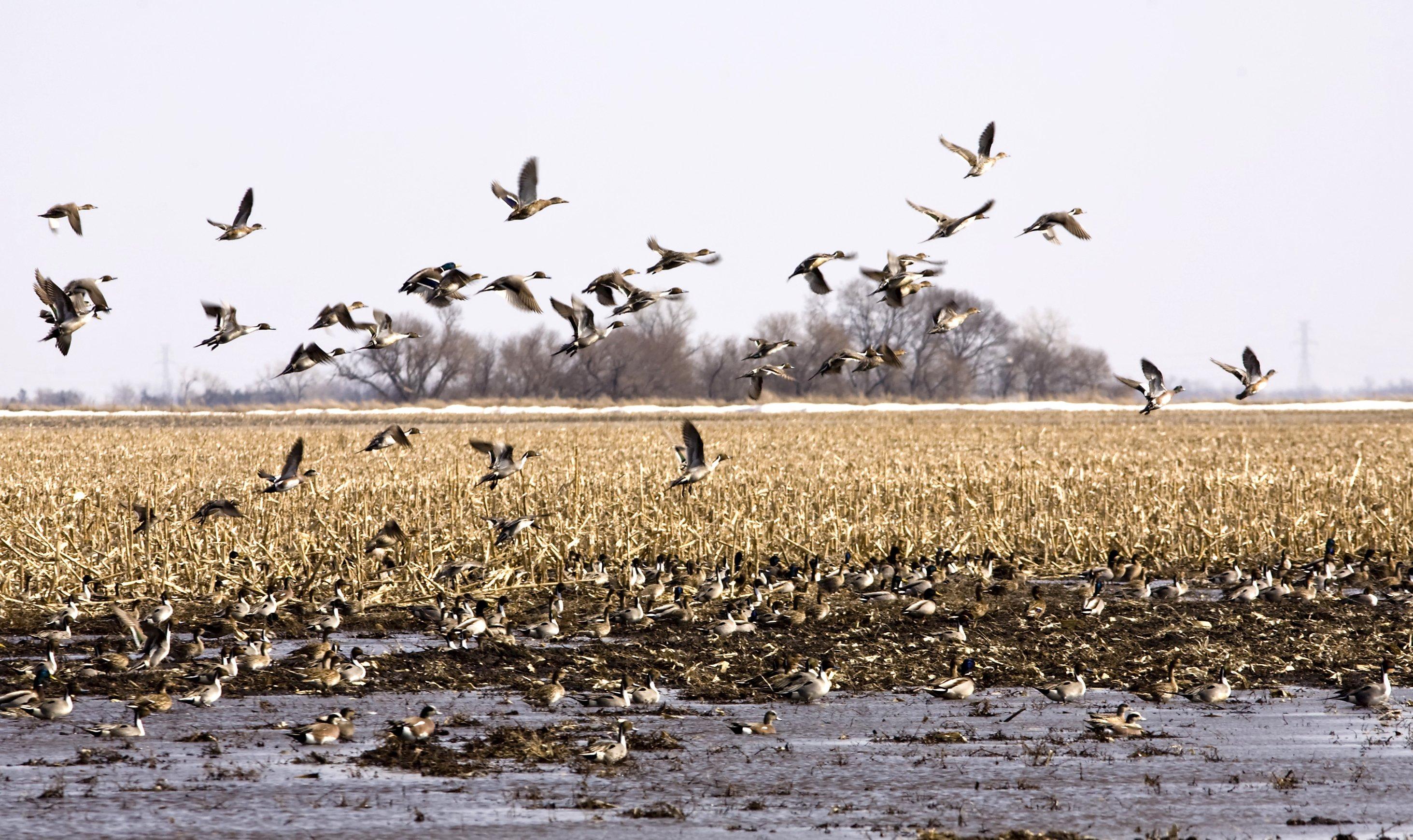
South Dakota is one of the few states that require nonresidents to enter a lottery for waterfowl hunting licenses, but draw odds remain high. Image by Patrick Ziegler.
The law has likely outlived its necessity, but old traditions die hard. There have been several efforts to overturn current laws, but understandably, native South Dakotans like the way it is, and efforts to abandon the limited nonresident license laws have failed.
So, if you’re a nonresident who wants to duck hunt in South Dakota, you must enter a lottery-style drawing in summer. Or as I did in 2010, you can enter a secondary late-summer draw for the rare unclaimed (and usually less desirable) licenses.
Because the application process is somewhat complicated, and you can buy licenses over the counter in neighboring North Dakota, relatively few hunters apply for licenses in South Dakota, and your odds of being drawn are pretty good. And the payoff is large: prime public duck hunting land galore, almost no competition from other hunters and huge numbers of ducks.
STEP-BY-STEP HOW TO APPLY
The application period usually opens the first week of June. There are several licenses to choose from, and at first glance, it’s confusing. But I have found the most functional license, which I always apply for, is NRW-00B-86. It’s good in most of the state for 10 days of hunting and can be split into two five-day periods.
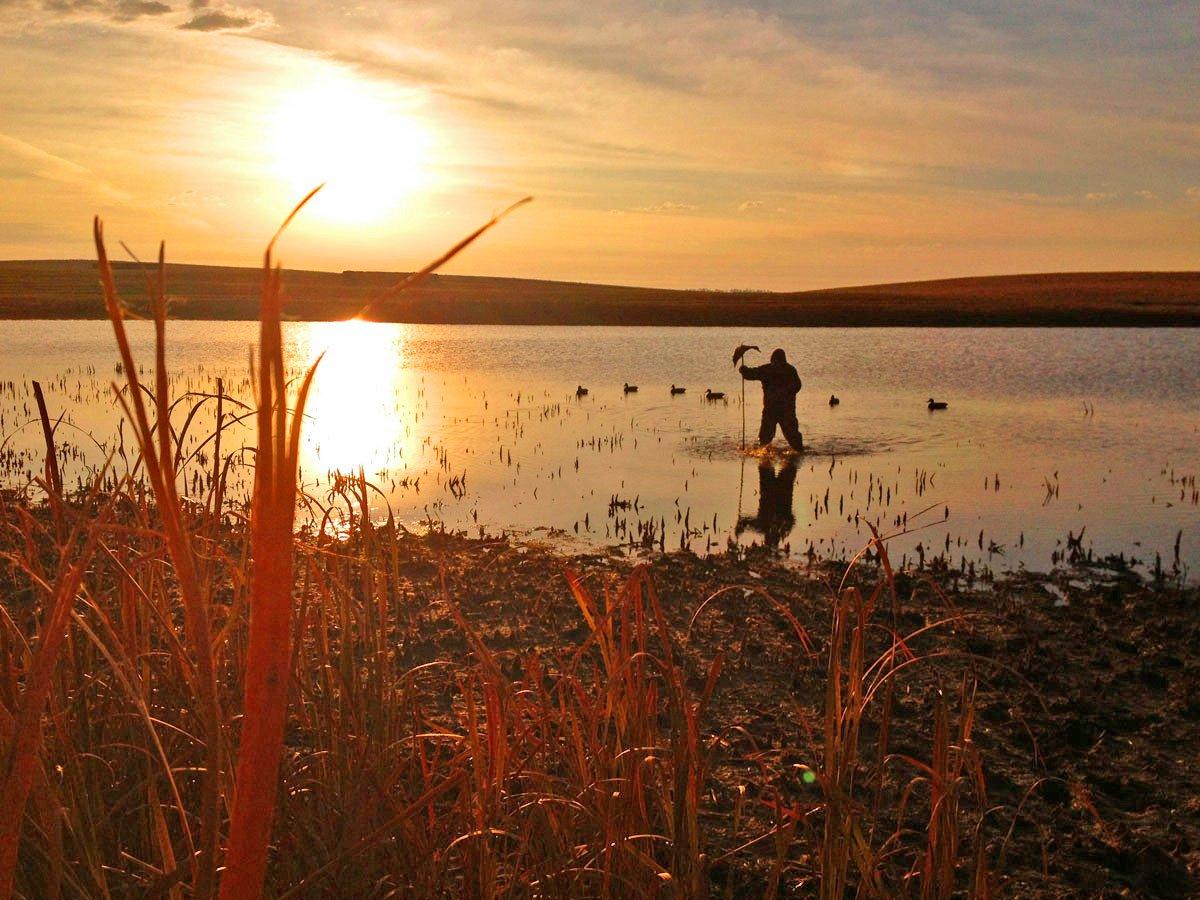
Drawn nonresident hunters receive a tag good for 10 total days of hunting and spectacular views. Image by Richard Simms.
The odds of being drawn for the B86 license are good. The South Dakota Game, Fish and Parks Department posts the drawing statistics on its web page. In 2024, it allotted 3,925 B86 licenses. A total of 5,540 people applied for those licenses, which means you had about a 70% chance of being drawn.
You need a $25 habitat stamp (nonrefundable) to apply, which is basically a disguised application fee. However, the license is not billed to your credit card until you’re drawn. You are usually notified of success or failure in mid-July. I’ve been fortunate, having received a license in all but one year when I applied.
WHERE TO GO
The state is divided into four waterfowl hunting zones (see this map). The season dates differ for the north/middle zones and southern zones. In my opinion, the Low Plains North zones are the best because they have the most public land. In the northern and middle zones, the season typically opens the third weekend in September.
This website provides a map that displays public hunting areas. Some are government-owned, but others are private lands under lease. SDGFP provides a printed atlas, but it also has a fantastic mobile app, Go Outdoors SD, you can download on your smartphone.
I have always found the best areas on the app or atlas are those in solid bright green: federal waterfowl production areas. These are prime wetland areas in America’s duck factory and have been purchased by the U.S. Fish and Wildlife Service with federal duck stamp dollars. They are typically shallow-water marshlands that are suitable for waterfowl nesting. These are especially good in the early season because lots of nesting birds imprint on the area. In other words, ducks are often plentiful, young and stupid.

The author says some of his best South Dakota hunts have been on federal waterfowl production areas, which have been purchased by the U.S. Fish and Wildlife Service using money generated from federal waterfowl stamps. Image by Richard Simms.
In 2010, when I didn’t apply until the secondary drawing, I hunted near Martin, in Bennett County. It’s not the best area, but it includes a large federal waterfowl refuge, and as noted, I killed lots of ducks. I’ve also hunted near Highmore, but my favorite areas are near Webster or Eureka.
Webster, about an hour east of Aberdeen, has great hunting on tons of public land. If you look on Google Maps, you will see the region has a huge number of potholes created by ancient glaciers. However, there is a bit more hunting pressure in this area because it’s closest to Minnesota and Wisconsin, where lots of nonresident hunters come from. It’s not problematic, however. You will still find plenty of untouched places to hunt.
The main thing is that you might be less likely to get permission to hunt private land. If you go during pheasant season, make sure you tell landowners up front that you don’t want to pheasant hunt. Landowners are extremely protective of their pheasant hunting.
Eureka, about an hour west of Aberdeen, is also a great area. Because it’s farther west, it likely gets less hunting pressure. More of the public hunting areas around Eureka are smaller potholes (versus larger lakes). If you are a walk-in hunter like me, that’s better.
Some areas have fairly large lakes where a small boat could be useful. But don’t expect to find many — or any — launch ramps. If you use a boat, you will like be launching off the mud shoreline.
Again, SDGFP will send you a free printed atlas of public access lands. But you will want the smartphone app. The only downside to the mobile app is you might sometimes lose cell service. You can download maps that work when you don’t have service, but I carry a printed atlas in the truck to help find my way to places I want to check out when the app won’t work.
WHEN TO GO
I’ve made South Dakota trips from the season opener in late September to the second week of November. Late season is best if you enjoy dry-field hunting and are equipped for it. But freezing weather is a greater possibility, which is bad if you’re a walk-in pothole hunter like me. I took a boat one year (in November). Of course, it was the year everything froze solid, and the boat was useless. That was also the only year I suffered skunks. I’ll never return in November, but your experience might vary.
I used to always go when pheasant season opened (the third weekend of October) so I could combine duck and pheasant hunting. In recent years, however, I have opted for the early season, before pheasant season opens. When pheasant season opens, South Dakota gets overrun with fluorescent orange. Of course, you can’t pheasant hunt until after 10 a.m. But pheasant hunters can still hinder duck hunting by driving and trampling around, disturbing ducks and messing up potholes you might have planned to hunt the next morning.
So in recent years, I’ve opted for early season hunting, when ducks haven’t been bothered much. I get the option to shoot two bonus blue-winged teal, and some days, I can hunt in shirt sleeves.
WHAT DUCKS WILL YOU SEE
You might encounter every duck species, although divers are usually only found on very large lakes, not smaller potholes. In the early season, you’ll likely encounter fewer mallards and more “off” ducks, such as gadwall, wigeon, teal (greenwings and bluewings), redheads and shovelers, although depending on the area, you will likely see some mallards and pintails. During the early season, ducks are often still in summer plumage and are hard to identify on the wing.
In one area I hunted this past year, there were lots of redheads. That was frustrating because the limit on redheads is two. If you shoot two, you must then be very careful to identify anything else before you pull the trigger. And again, that can be tough if the light is bad or ducks are still wearing summer plumage.
Don’t Miss: IS HUNTING LESS OFTEN THE KEY TO SHOOTING MORE MALLARDS?
HOW TO HUNT
I subscribe to the KISS theory (keep it simple, stupid). Years ago, I hauled dozens of decoys to South Dakota but soon learned it wasn’t effective or efficient. Tons of decoys would help when hunting late-season migrants. But when hunting the early season, when there are mostly local birds, there’s no need to bother with huge spreads.
Nowadays, I usually load two-dozen decoys in the truck, but 12 usually stay in the bag. And some days, if I’m hunting a spot where I have to drag gear a long distance in my sled, I only carry six Texas-rigged decoys and one spinning-wing decoy.
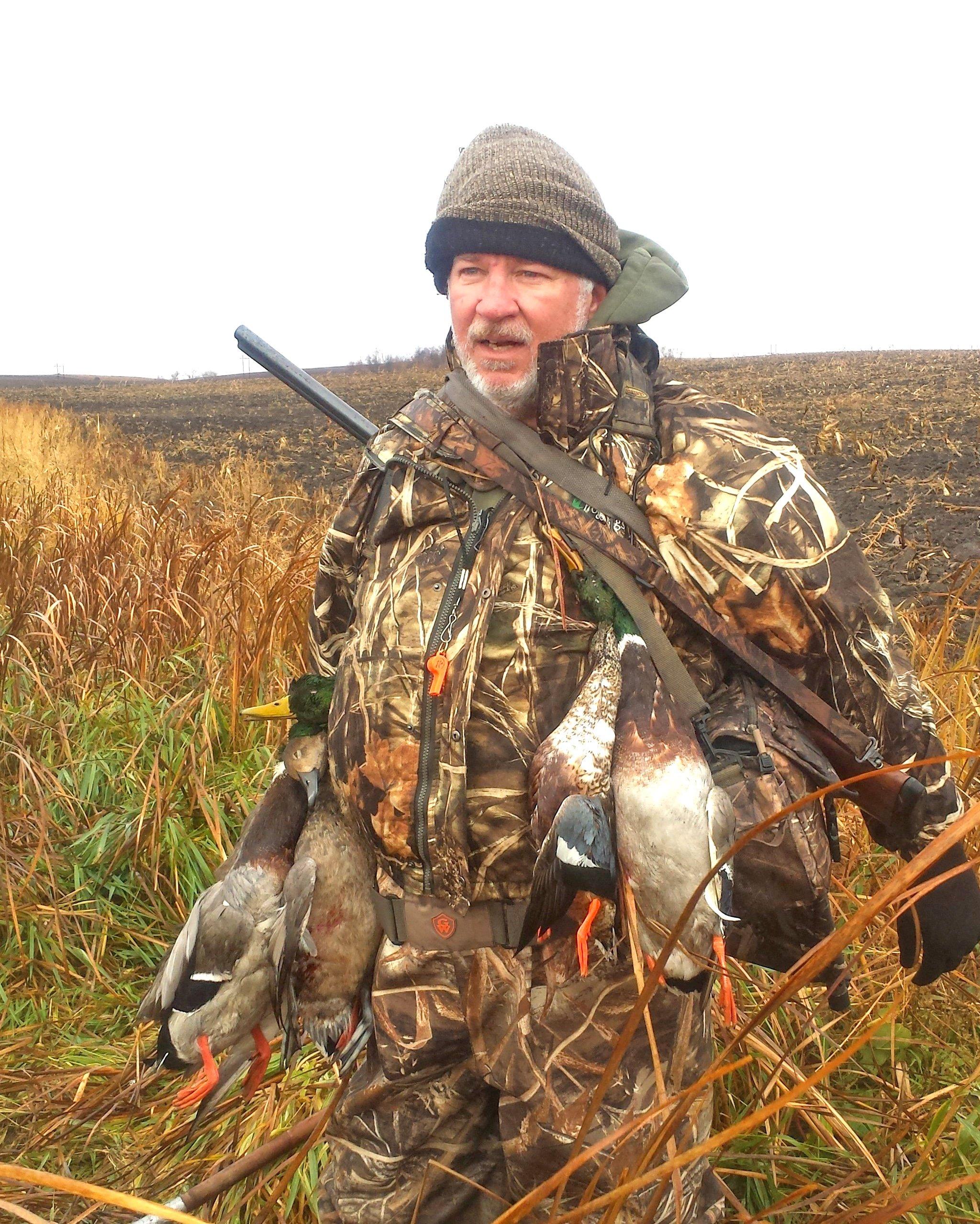
A handful of decoys and some scouting time can be all it takes to fill a limit. Image by Richard Simms.
Most of the best areas are walk-in-only access. Some public access areas allow you to drive motorized vehicles to reach your hunting spot or at least drop off gear. However, I’ve found that those usually aren’t the best duck hunting spots.
I drive around to good looking areas I find on the app or atlas and glass potholes with binoculars. I look for potholes with reasonably easy access (no more than a quarter- or half-mile walk — preferably closer). If you’re willing to put a lot of miles on the truck, such places are not hard to find.
I’ve hunted potholes that were several hundred acres down to potholes that you could throw a rock across. Even if you are hunting big water, you can often still decoy birds, especially in the early season. If you go during the late season, have the manpower and are willing to work, hauling a trailer and being prepared to hunt dry fields might be advisable. I’m not geared up for that, and I’m too old to bother doing that much work.
My general pattern is to hunt in the morning. Then, I go in to eat, rest and clean ducks. Later that afternoon, I’ll drive roads searching out new places to hunt. Or I’ll pheasant hunt if it’s open.
WHAT ABOUT BLINDS?
I have never built a blind in South Dakota. In fact, I don’t even carry blind-building materials with me. I’ve always depended solely on hiding in natural cover, mostly cattails and marsh grass.
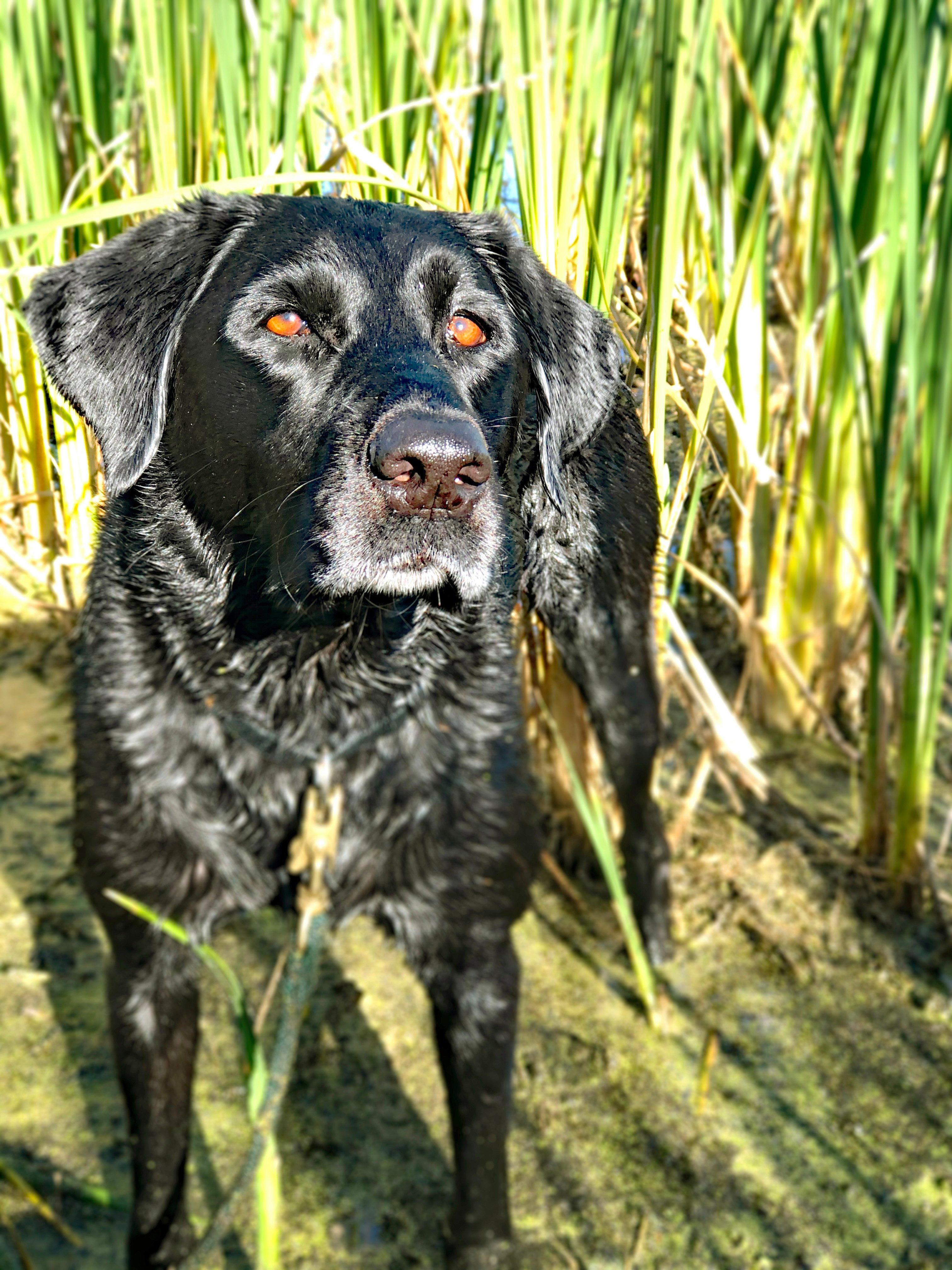
The author's retriever, Britney, keeps her eyes peeled for ducks. Simms says he never has to build blinds to duck hunt because almost every pothole is surrounded by thick cattails, bulrush and marsh grass. Image by Richard Simms.
For the most part, that has never failed me. I had problems one year when we found that some of our favorite potholes had been hard hit by summer hail storms and the natural cover had been wiped out. That was the only time we wished we had good layout blinds.
BEWARE THE MUD
One thing to be aware of: Some potholes, although shallow and wadable, contain man-eating mud. There might only be 6 inches of water, but it sits atop 2 feet of gumbo mud built up by centuries of rotting vegetation.
I have tiny feet, and on more than once, I’ve been dangerously stuck in the muck and had to crawl out of the pond. One year, I thought my dog might die retrieving a duck across a pothole thick with gumbo mud. Nowadays, you will never find me wading into a South Dakota pothole without a sturdy wading stick. I also wear heavy socks so my feet fit tight in my waders and won’t pull out of the boot when I’m stuck in gumbo. That said, sometimes you’ll also find areas with a solid bottom. You never know until you step into it.
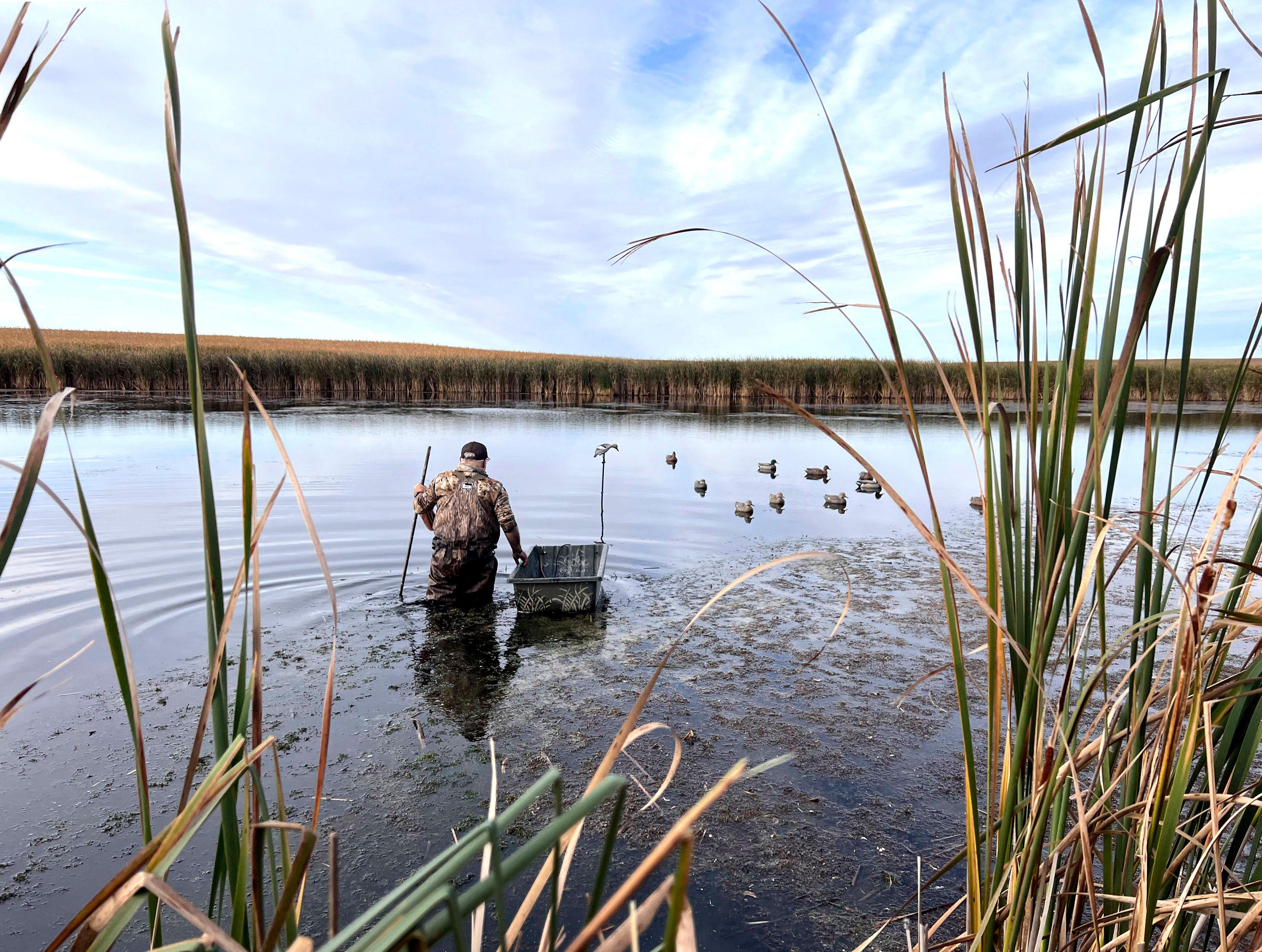
Although you don’t need a lot of gear to hunt the pothole region, a good wading staff can come in handy for muddy bottoms. Image by Richard Simms.
LOCAL RESOURCES
Always track down the local game warden(s) wherever you decide to go. You can find their numbers on the SDGFP website. Some won’t answer, but I have never had one not call me back sooner or later. I’ve had them come to my hotel room and circle spots on the map I should check out, and even suggest private landowners who would likely give me permission to duck hunt. Many or most have an office in their local courthouse or sheriff’s office. Every South Dakota Game and Fish employee I’ve spoken with — field staff or office personnel — has always been incredibly helpful. Their customer service puts most other wildlife agencies to shame.
If you go the Webster area, I recommend Lynn Lake Lodge. It’s run by great people, is very down home, and has good rates and excellent game cleaning facilities. Call them early and let them know you’re interested in lodging if you get drawn. They are used to that and will put you on a list. Then, when drawing results are announced, call them quickly to confirm your reservation, because they get besieged when results come out and fill up fast, especially during weekends.
In many small towns (such as Eureka), you can often find houses to rent. There is one motel — Lakeview — in Eureka, but I think renting a house is a better option.
CHECK OUT OUR LATEST CAMO PATTERN: REALTREE APX
CONCLUSION
If you’re a waterfowler, I highly recommend doing a South Dakota DIY hunt at least once in your life. Will you always have incredible hunts and kill limit after limit? No. But you will definitely have the opportunity to do so if you put in the work.
We often quote Ralph Waldo Emerson: “It’s not about the destination, it is all about journey.” That is, although limits of ducks are nice, the true enjoyment, satisfaction and memories are in the travel — meeting new people, seeing new sights and experiencing new adventures. Dead ducks are just a bonus.
And you will have the satisfaction of having done it all yourself.











